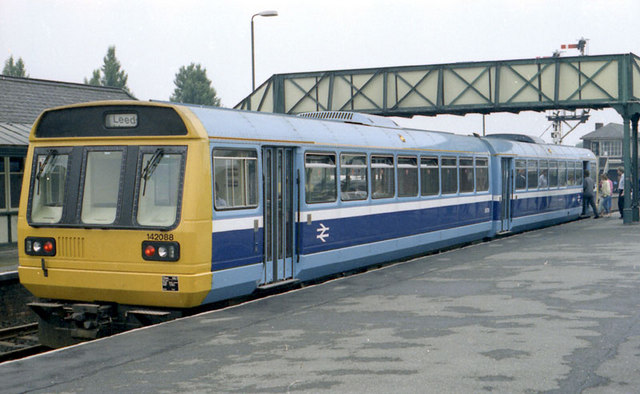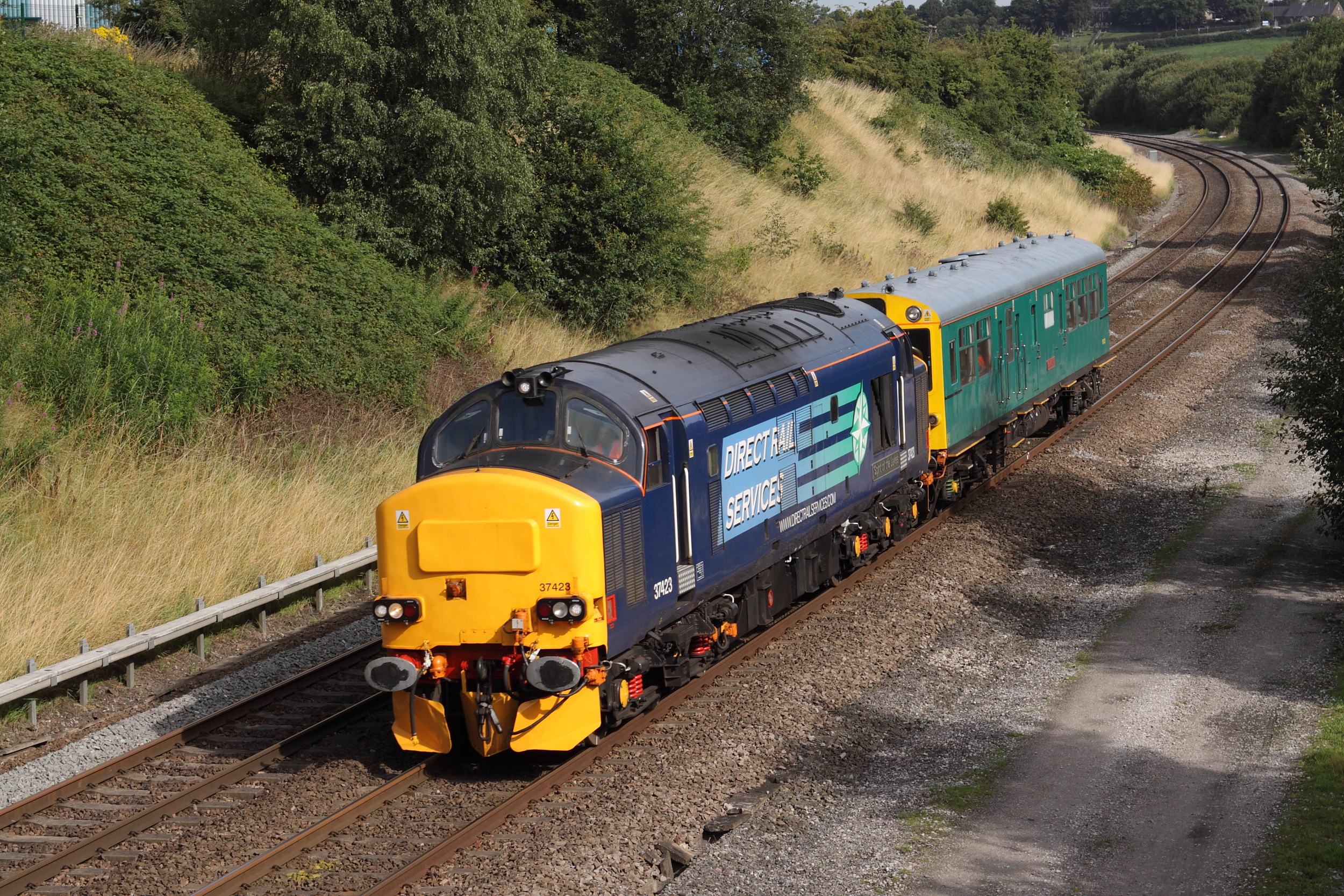|
Roby Railway Station
Roby railway station serves the village of Roby, Merseyside, England. It is located east of Liverpool Lime Street on the former Liverpool and Manchester Railway, and west of Huyton. It is operated by Northern Trains, as part of Merseytravel's electrified City Line to Manchester and Wigan North Western. History Roby station was opened in 1830 as part of the Liverpool and Manchester Railway, and is one of the oldest passenger railway stations in the world. These early intermediate stations were often little more than halts, usually positioned where the railway was crossed by a road or turnpike. This probably accounts for variations in the names of these stopping places, Roby station was originally known as ''Roby Lane Gate'', or just ''Roby Gate'' before finally becoming ''Roby'' at an unknown date. Originally Roby station had four platforms, but the two platforms on the northern side of the station (Platforms 3 and 4) were closed in the 1970s, and the track was lifted. As part ... [...More Info...] [...Related Items...] OR: [Wikipedia] [Google] [Baidu] |
Roby, Merseyside
Roby is a village in the Metropolitan Borough of Knowsley, Merseyside, England. It was previously administratively linked with its neighbour Huyton by the Huyton-with-Roby civil parish and Huyton with Roby Urban District. Like Huyton, Roby is effectively a dormitory village or suburb of the neighbouring City of Liverpool. At the 2001 Census, the population of Roby was 9,353, (4,511 males, 4,842 females). reducing to 7,254 at the 2011 Census. Roby is the location of the sixth form centre of Knowsley Community College. History Roby grew from a tenth-century Norse settlement named ''Rabil'', meaning "boundary farm/village". Roby is therefore mentioned, as ''Rabil'', in the ''Domesday Book'' of 1086. In 1351, it became part of the Barony of Widnes and subsequently merged into the Duchy of Lancaster. Governance In 1894 Roby was included in the Huyton with Roby Urban District. On the abolition of the administrative county of Lancashire in 1974, the urban district was also abolis ... [...More Info...] [...Related Items...] OR: [Wikipedia] [Google] [Baidu] |
Manchester Piccadilly
Manchester Piccadilly is the principal railway station in Manchester, England. Opened as Store Street in 1842, it was renamed Manchester London Road in 1847 and became Manchester Piccadilly in 1960. Located to the south-east of Manchester city centre, it hosts long-distance intercity and cross-country services to national destinations including London, Birmingham, Nottingham, Glasgow, Edinburgh, Cardiff, Bristol, Exeter, Plymouth, Reading, Southampton and Bournemouth; regional services to destinations in Northern England including Liverpool, Leeds, Sheffield, Newcastle and York; and local commuter services around Greater Manchester. It is one of 19 major stations managed by Network Rail. The station has 14 platforms: 12 terminal and two through platforms (numbers 13 and 14). Piccadilly is also a major interchange with the Metrolink light rail system with two tram platforms in its undercroft. Piccadilly is the busiest station in the Manchester station group with over 30milli ... [...More Info...] [...Related Items...] OR: [Wikipedia] [Google] [Baidu] |
Railway Stations In Great Britain Opened In 1830
Rail transport (also known as train transport) is a means of transport that transfers passengers and goods on wheeled vehicles running on rails, which are incorporated in tracks. In contrast to road transport, where the vehicles run on a prepared flat surface, rail vehicles (rolling stock) are directionally guided by the tracks on which they run. Tracks usually consist of steel rails, installed on sleepers (ties) set in ballast, on which the rolling stock, usually fitted with metal wheels, moves. Other variations are also possible, such as "slab track", in which the rails are fastened to a concrete foundation resting on a prepared subsurface. Rolling stock in a rail transport system generally encounters lower frictional resistance than rubber-tyred road vehicles, so passenger and freight cars (carriages and wagons) can be coupled into longer trains. The operation is carried out by a railway company, providing transport between train stations or freight customer facili ... [...More Info...] [...Related Items...] OR: [Wikipedia] [Google] [Baidu] |
Former London And North Western Railway Stations
A former is an object, such as a template, gauge or cutting die, which is used to form something such as a boat's hull. Typically, a former gives shape to a structure that may have complex curvature. A former may become an integral part of the finished structure, as in an aircraft fuselage, or it may be removable, being using in the construction process and then discarded or re-used. Aircraft formers Formers are used in the construction of aircraft fuselage, of which a typical fuselage has a series from the nose to the empennage, typically perpendicular to the longitudinal axis of the aircraft. The primary purpose of formers is to establish the shape of the fuselage and reduce the column length of stringers to prevent instability. Formers are typically attached to longerons, which support the skin of the aircraft. The "former-and-longeron" technique (also called stations and stringers) was adopted from boat construction, and was typical of light aircraft built until the ad ... [...More Info...] [...Related Items...] OR: [Wikipedia] [Google] [Baidu] |
DfT Category E Stations
The Department for Transport (DfT) is a department of His Majesty's Government responsible for the English transport network and a limited number of transport matters in Scotland, Wales and Northern Ireland that have not been devolved. The department is run by the Secretary of State for Transport, currently (since 25 October 2022) Mark Harper. The expenditure, administration and policy of the Department for Transport are scrutinised by the Transport Committee. History The Ministry of Transport was established by the Ministry of Transport Act 1919 which provided for the transfer to the new ministry of powers and duties of any government department in respect of railways, light railways, tramways, canals and inland waterways, roads, bridges and ferries, and vehicles and traffic thereon, harbours, docks and piers. In September 1919, all the powers of the Road Board, the Ministry of Health, and the Board of Trade in respect of transport, were transferred to the new ministry. ... [...More Info...] [...Related Items...] OR: [Wikipedia] [Google] [Baidu] |
Railway Stations In The Metropolitan Borough Of Knowsley
Rail transport (also known as train transport) is a means of transport that transfers passengers and goods on wheeled vehicles running on rails, which are incorporated in tracks. In contrast to road transport, where the vehicles run on a prepared flat surface, rail vehicles (rolling stock) are directionally guided by the tracks on which they run. Tracks usually consist of steel rails, installed on sleepers (ties) set in ballast, on which the rolling stock, usually fitted with metal wheels, moves. Other variations are also possible, such as "slab track", in which the rails are fastened to a concrete foundation resting on a prepared subsurface. Rolling stock in a rail transport system generally encounters lower frictional resistance than rubber-tyred road vehicles, so passenger and freight cars (carriages and wagons) can be coupled into longer trains. The operation is carried out by a railway company, providing transport between train stations or freight customer facili ... [...More Info...] [...Related Items...] OR: [Wikipedia] [Google] [Baidu] |
Broad Green Railway Station
Broad Green railway station is a railway station serving the Broadgreen district of Liverpool, England, east of Liverpool Lime Street. Electrically powered trains have been operating through the station since March 2015, using Class 319 EMUs. History The oldest passenger station in the world was Crown Street railway station on the Liverpool and Manchester passenger railway opening on 17 September 1830. The trains set out on the first day at the Liverpool end. The second station on the line was the original Edge Hill railway station, the third was Broad Green station. In 1836 Crown Street station was demolished and Edge Hill decommissioned. A new Edge Hill station opened to the north of the original station in the grounds of the Edge Hill junction. This leaves Broad Green station as the oldest used railway station in the world. The current station buildings are not original, dating from 1972. About to the east of the station the abandoned North Liverpool Extension Line passe ... [...More Info...] [...Related Items...] OR: [Wikipedia] [Google] [Baidu] |
British Rail Class 142
The British Rail Class 142 Pacer were diesel multiple units built for British Rail (BR) from 1985 to 1987. The class were built with a high level of commonality with the widely-used Leyland National bus. They are part of the Pacer family of railbuses. The last set was withdrawn from service in 2020. Background By the beginning of the 1980s, British Rail (BR) operated a large fleet of first-generation DMUs, which had been constructed in prior decades to various designs. While formulating its long-term strategy for this sector of its operations, British Rail planners recognised that considerable costs would be incurred by undertaking refurbishment programmes necessary for the continued use of these ageing multiple units, particularly due to the necessity of handling and removing hazardous materials such as asbestos. In the light of the high costs involved in retention, planners examined the prospects for the development and introduction of a new generation of DMUs to succeed th ... [...More Info...] [...Related Items...] OR: [Wikipedia] [Google] [Baidu] |
Northern Rail
Northern Rail, branded as Northern, was an English train operating company owned by Serco-Abellio that operated the Northern Rail franchise from 2004 until 2016. It was the primary passenger train operator in Northern England, and operated the most stations of any train operating company in the United Kingdom. Northern Rail was replaced on 1 April 2016 by Arriva Rail North. History In 2000 the Strategic Rail Authority announced that it planned to reorganise the North West Regional Railways and Regional Railways North East franchises operated by First North Western and Arriva Trains Northern. A TransPennine Express franchise would be created for the long-distance regional services, with the remaining services to be operated by a new Northern Rail franchise. On 1 July 2004 the Strategic Rail Authority awarded the franchise to Serco-NedRailways, beating FirstGroup. The franchise was awarded for six years and nine months, with a two-year extension subject to performance target ... [...More Info...] [...Related Items...] OR: [Wikipedia] [Google] [Baidu] |
Blackpool North Railway Station
Blackpool North railway station is the main station serving the seaside resort of Blackpool in Lancashire, England. It is the terminus of the main Blackpool branch line and is northwest of Preston. The station was opened in its present form in 1974, and succeeded a previous station a few hundred yards away on Talbot Road which had first opened in 1846 and had been rebuilt in 1898. The present station is based on the 1938 concrete canopy which covered the entrance to the former excursion platforms of the old station. Blackpool's other station, Blackpool South, is situated in the south of the town, with services towards and , and does not connect to Blackpool North. Blackpool North has regular services to Manchester, Liverpool, Bolton, Wigan, Preston, Blackburn, Leeds and York. There are six intercity trains a day to London Euston via . There is one train per week Sunday only to Carlisle via the Ribble Valley and the Settle-Carlisle Line during the Summer timetable. Histor ... [...More Info...] [...Related Items...] OR: [Wikipedia] [Google] [Baidu] |




